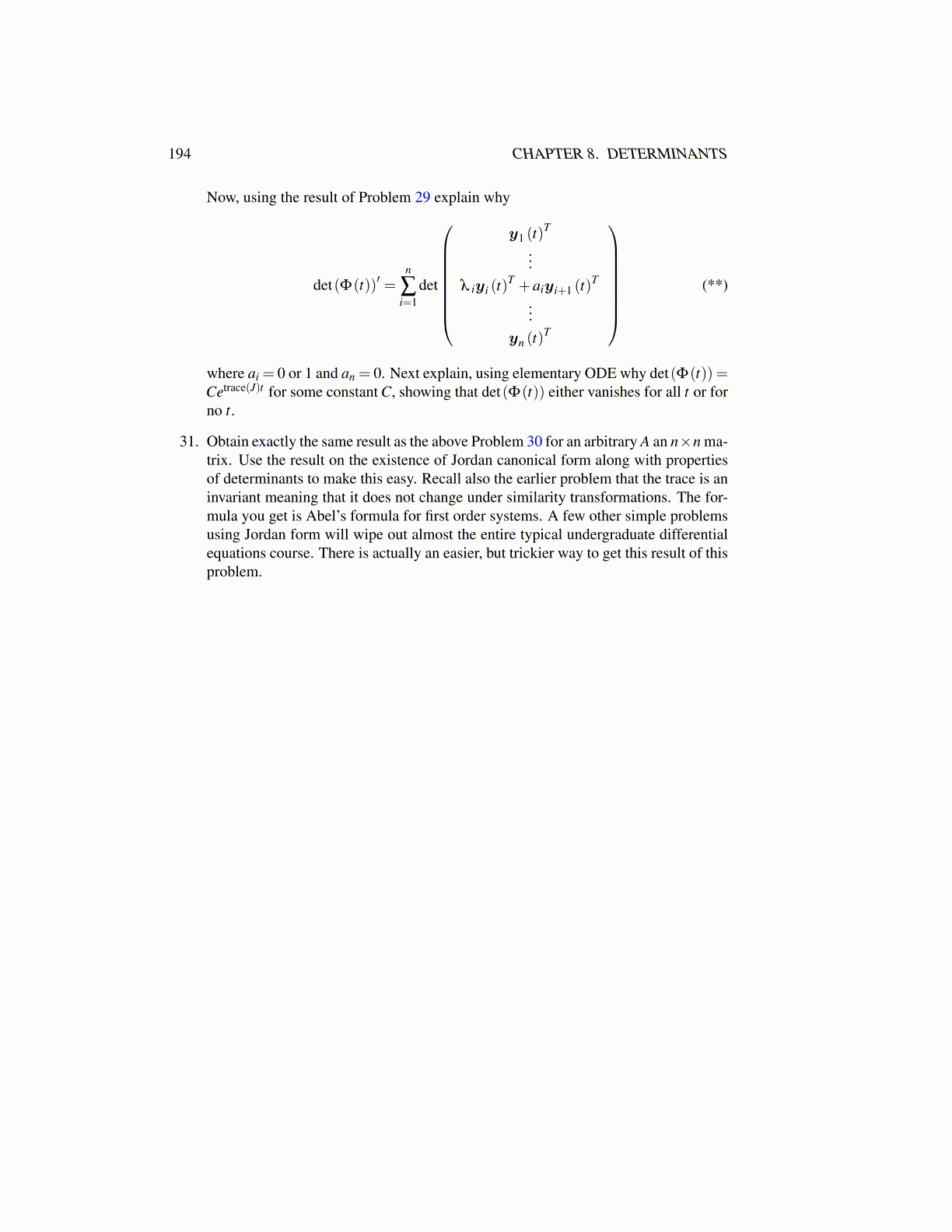
194 CHAPTER 8. DETERMINANTS
Now, using the result of Problem 29 explain why
det(Φ(t))′ =n
∑i=1
det
y1 (t)T
...λ iyi (t)
T +aiyi+1 (t)T
...yn (t)
T
(**)
where ai = 0 or 1 and an = 0. Next explain, using elementary ODE why det(Φ(t)) =Cetrace(J)t for some constant C, showing that det(Φ(t)) either vanishes for all t or forno t.
31. Obtain exactly the same result as the above Problem 30 for an arbitrary A an n×n ma-trix. Use the result on the existence of Jordan canonical form along with propertiesof determinants to make this easy. Recall also the earlier problem that the trace is aninvariant meaning that it does not change under similarity transformations. The for-mula you get is Abel’s formula for first order systems. A few other simple problemsusing Jordan form will wipe out almost the entire typical undergraduate differentialequations course. There is actually an easier, but trickier way to get this result of thisproblem.